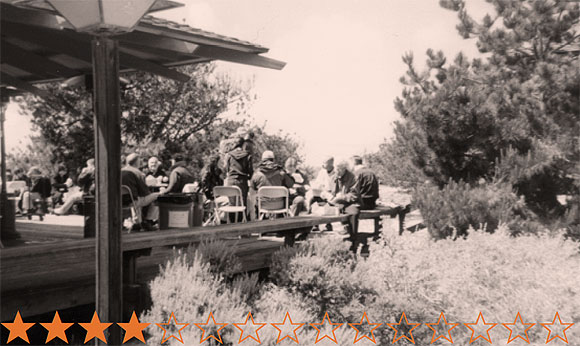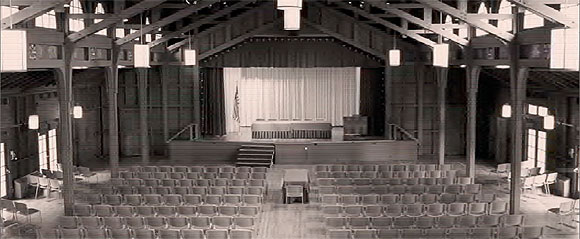
A lot has changed since the 2001 Monterey Design Conference. The attack on the World Trade Center, the military action in the Middle East, Enron and the collapse of technology stocks—all leave us searching for direction in uncertain times. As a nation, we are in an unprecedented global position as the world’s leading superpower and at the same time its biggest target. This combination of power and vulnerability leaves many with unsettled feelings about the future. The topic for this year’s AIACC design conference engages these troubling events by looking at the actions designers are taking on the local front to bring about change in their own backyards.
The expansive growth of the go-go ’90s, fueled by the economic expectations of the Internet and the subsequent bursting of the dot-com bubble, has left many in architecture struggling to find ways to fill the gap left by the slowdown in the commercial market. Public work has helped fill the void. The theme of the 16th Monterey Design Conference, “doing good, doing good,” looks at how the change in patronage for architects practicing today is an opportunity to enhance the profile of the profession while, as a society, we redefine our priorities.
In the thirteenth century text Summa Theologica, St. Thomas Aquinas draws a relationship between craftsmanship and citizenship. He writes, “A craftsman will not act well unless he acquires a love for the good pursued in the exercise of his craft: so that to be a good citizen, you must love the good of your city.” St. Thomas equates doing good in one’s craft with doing good as a citizen. Imbedded in the argument is the notion of responsibility, of how one can affect the world around through the love of what one is doing. The relationship between craft and the civic good is particularly meaningful for those practicing architecture today who desire to imbue the profession with a renewed sense of purpose.
Architects affect society through the design of places—or, as Charles Moore put it, the design of variously scaled environments filled with big and little drama where people live, work, learn, play, and gather. MDC 2003 is organized into five panels that loosely fit Moore’s categorization of places. We have asked noted individuals to give their unique perspectives on the topic of “doing good.” Robert Ivy, FAIA, editor of Architectural Record, will moderate the panel discussions and provide continuity for the entire weekend.

The memory of blackouts and the energy crisis Californians continue to face remind us to think wisely about our diminishing natural resources. Amory Lovins, CEO of the Rocky Mountain Institute, and Dan Sturges, an electric car innovator, will discuss alternative visions for the future of transportation and energy use. Sym Van der Ryn and William Morrish will follow with a discussion of sustainability and urban environments. David Dewar, a distinguished master planner from South Africa, will join Teddy Cruz, David Abel, and Lawrence Scarpa, AIA, from Southern California to discuss their efforts to make livable places. San Diego and the Bay Area have seen the rise of community- based development, marrying the effort of developers and architects to transform cities through enlightened interventions. Developer Tom Sargent will be in conversation with architects Eric Naslund, FAIA, Jonathan Segal, FAIA, and David Baker, FAIA, to discuss their approaches to making places that work. The panel focusing on gathering places features Thom Mayne, FAIA, and Edward Feiner, FAIA, Chief Architect, U.S. General Service Administration (GSA), who will discuss the San Francisco Federal Courthouse project, sponsored by the GSA, and how other federally sponsored buildings affect local communities.
The Monterey Design Conference is a unique forum in which to discuss issues facing the profession. The theme of “doing good, doing good” is about individuals working to enrich the community while achieving designs of merit. By examining the work of people who have put thought into action, we hope that we might inspire others to do the same. We are looking to promote action on both the individual and collective levels, to go back into the community and affect change. The open hand that gives as well as receives is emblematic of the exchange we are hoping to achieve.
You can find out more about the conference at www.aiacc.org. Look under the heading Monterey Design Conference 2003. You can also help us start the dialogue by answering a question on the website. Please help get the discussion going by responding to our inquiry: What is “doing good” for you?
Author Mark L. Donohue, AIA, is a practitioner and educator. He received his B. Arch. from Carnegie Mellon and his M. Arch. from Harvard. He is a principal of Visible Research Office, a multidisciplinary firm that provides design services to product companies, commercial ventures, and residential markets in the Bay Area. He is currently an Adjunct Professor at CCA (California College of the Arts, formerly CCAC), where he teaches studios with a particular focus on issues of digital representation and making. His work has appeared in various publications including Zyzzyva, Appendx, and Metropolis.
Originally published 3rd quarter 2003, in arcCA 03.3, “Done Good.”





